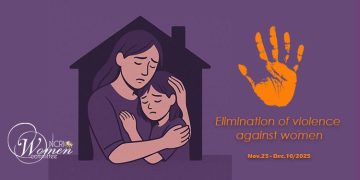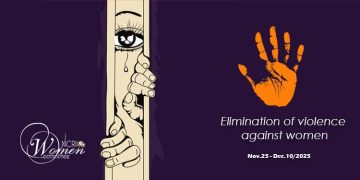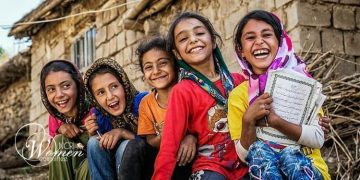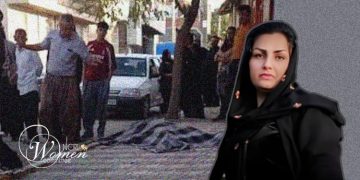A Glance at a Costly and Ineffective Policy
The “Youthful Population Law” in Iran vs. Women’s Human Rights
Following a directive issued by the mullahs’ Supreme Leader Ali Khamenei in May 2013 to increase childbirth, the “Family and Youthful Population Support Law” was passed as a bill by the Iranian regime’s parliament in 2021. The declared aim of the Population Growth law was to boost fertility rates and counter population decline by supporting families. However, the reality is quite different. Many provisions of this bill—especially those related to reproductive health, employment, and women’s personal freedoms—violate internationally recognized human rights.
For Khamenei and the regime, the issue of population has no national humanitarian basis. Rather, their goal is to increase regional power. Marzieh Vahid Dastjerdi, the regime’s Population Headquarters Secretary, admitted the regime’s security-based view of the population issue, “When a country’s population is 30 million and its neighbor’s is 300 million, the balance of power is disrupted.” (Arman-e Emrooz newspaper – May 20, 2025)
This law’s anti-national and anti-public nature is evidenced by its reliance on coercion and repression instead of state support—costing women their health and futures. Population growth cannot be forced, and after four years of implementation, the policy’s failure is openly acknowledged by state-affiliated experts and media.
An Inevitable Defeat
In this context, Marzieh Vahid Dastjerdi also announced that the fertility rate has dropped to 1.44, well below the replacement rate of 2.1. The replacement fertility rate is defined as the level at which a population can replace itself without growing or shrinking. (Javanonline – May 20, 2025)
On the same day, the Resalat newspaper wrote, “The accelerating aging trend led to the passage of the Family Protection and Youthful Population Law three years ago, but it appears the law has not been very successful.” (Resalat Newspaper – May 20, 2025)

Saleh Ghassemi, secretary of the Strategic Population Studies Center, warned that if this trend continues, Iran’s population growth rate will reach zero by around 2036, and will turn negative starting in 2041.
Three years after the law’s enactment, mounting evidence shows inaction, delay, and neglect by many governmental bodies in fulfilling their legal obligations. One of the clearest and least ambiguous obligations is the requirement to establish and provide childcare centers at or near workplaces. However, less than a quarter of institutions have complied. This concerning state of affairs not only undermines legislative credibility but also sends a clear message to families: the country’s executive system still lacks the will to effectively support working parents.
Unfortunately, although the Family Protection and Youthful Population Law includes 154 articles and provisions promising various incentives for childbearing, with each assigned to a specific agency,mstudies show that only a small fraction of them have actually been implemented. The fertility window is extremely narrow and will close within four years. After that, it will be significantly harder to reverse course, as the number of people in reproductive age will plummet. (Resalat Newspaper – May 20, 2025)
Alireza Raeisi, Deputy Minister of Health, also admitted to another aspect of this failure, “The average age at divorce is increasing, and the highest rate of divorces occurs within the first five years of marriage. Starting this year, in some provinces, the number of deaths now exceeds births.” (Etemadonline – May 20, 2025)

Mohammad-Jafar Ghaempanah, Deputy for Executive Affairs to the clerical regime’s president, also confessed, “The number of births has fallen below one million per year, an unprecedented figure in the country’s modern history, with irreversible consequences in the coming decades. Currently, the elderly make up 10.4% of the population, but in the next 25 years, that share will rise to 26.5%.” (Etemadonline – May 20, 2025)
On the other side of this issue, in the misogynistic clerical regime, women bear a disproportionate share of the suffering brought on by aging and loneliness. According to Mojgan Rezazadeh, head of the National Council on Aging Secretariat, the population of elderly women has significantly outpaced that of elderly men. It is projected that by 2051, the number of ‘elderly women living alone’ will triple. Yet only 29% of these women have a stable and defined income.” (IRNA– January 19, 2025)
Conclusion
The Youthful Population Law in Iran is a clear example of the institutionalized misogyny of the clerical regime and the exploitation of women by this regime.
By examining the titles of bills related to women presented in the mullahs’ parliament, such as the “The Youthful Population and Protection of the Family law”, “Protection of Family through Promoting the Culture of Modesty and Hijab,” and the “Bill for Preserving Dignity and Supporting Women and Families”, even without analyzing their misogynistic content, it becomes clear that this regime recognizes no independent identity for women. With this viewpoint, it denies any rights to women as half of the active and influential population of the country, who play decisive and effective roles in all aspects and challenges of life.

In Iran under clerical rule, the continual violation of women’s rights in all sectors—whether through misogynistic legislation or via brutal suppression in the streets, universities, workplaces, and especially within the family—has become a root cause of widespread domestic violence, systemic discrimination, and unthinkable deprivation in society and in the most hidden corners of women’s lives.
However, the solution and liberation of Iranian women from this hell crafted by the ruling religious dictatorship is the swift overthrow of this misogynistic regime and the establishment of a democratic republic based on the separation of religion and state and gender equality. This republic would herald a free and equal society for all Iranians, founded on Maryam Rajavi’s Ten-point Plan, the cornerstone of a democratic Iran and a necessity for peace and development in the region and the world.
This struggle has been ongoing for 46 years, led by the arisen people of Iran, with brave Iranian women, courageous youth, and heroic Resistance Units at the forefront. They urgently need your support to help us in this great fight against this seven-headed monster.
Religious fundamentalism, whose heart beats in Tehran, is a global threat. Women, youth, and the people of Iran need the help and support of every single one of you to bring down this monster once and for all!
























